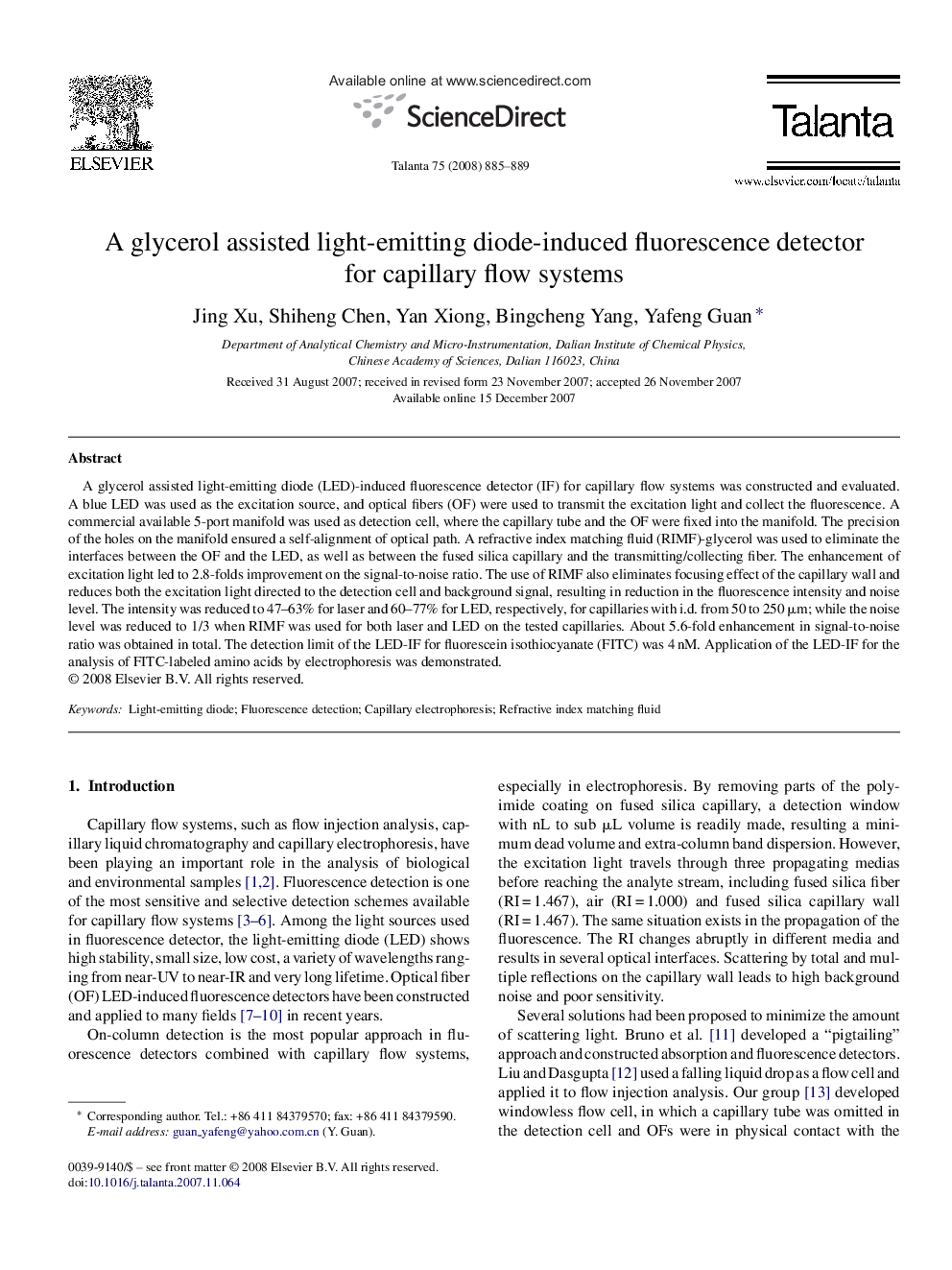| Article ID | Journal | Published Year | Pages | File Type |
|---|---|---|---|---|
| 1243705 | Talanta | 2008 | 5 Pages |
A glycerol assisted light-emitting diode (LED)-induced fluorescence detector (IF) for capillary flow systems was constructed and evaluated. A blue LED was used as the excitation source, and optical fibers (OF) were used to transmit the excitation light and collect the fluorescence. A commercial available 5-port manifold was used as detection cell, where the capillary tube and the OF were fixed into the manifold. The precision of the holes on the manifold ensured a self-alignment of optical path. A refractive index matching fluid (RIMF)-glycerol was used to eliminate the interfaces between the OF and the LED, as well as between the fused silica capillary and the transmitting/collecting fiber. The enhancement of excitation light led to 2.8-folds improvement on the signal-to-noise ratio. The use of RIMF also eliminates focusing effect of the capillary wall and reduces both the excitation light directed to the detection cell and background signal, resulting in reduction in the fluorescence intensity and noise level. The intensity was reduced to 47–63% for laser and 60–77% for LED, respectively, for capillaries with i.d. from 50 to 250 μm; while the noise level was reduced to 1/3 when RIMF was used for both laser and LED on the tested capillaries. About 5.6-fold enhancement in signal-to-noise ratio was obtained in total. The detection limit of the LED-IF for fluorescein isothiocyanate (FITC) was 4 nM. Application of the LED-IF for the analysis of FITC-labeled amino acids by electrophoresis was demonstrated.
